InfoSci Game Design Students Showcase Creativity and Collaboration at Global Game Jam 2025
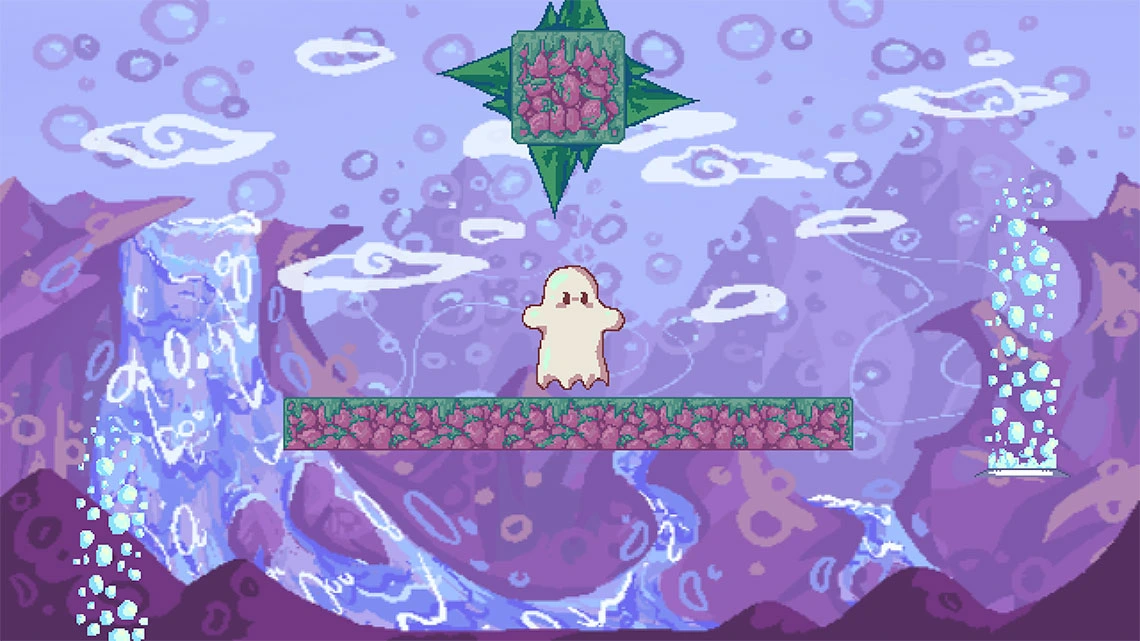
The Memories of Bloob, by Renée DeVivo, Emma Rex, Kai Koehler, Jack Newman and Kiana Koehler.
Game design and development students from the College of Information Science at the University of Arizona joined forces with local developers for an intense weekend of creativity, collaboration and community-building as part of the 2025 Global Game Jam (GGJ). Hosted on January 25-26 on the U of A campus, the local GGJ event brought together more than two dozen students (including members of the Game Dev Club) and industry professionals from Tucson Game Developers (TGD) to rapidly design, build and submit games as part of the worldwide competition.
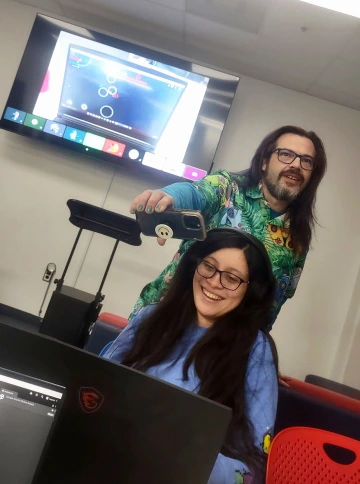
Streaming fun at the Tucson and U of A Global Game Jam session: GGJ participant Bob Glahn streams Kristal Guitierrez streaming a game designed by Kyle Engman. Photo by Ben Seckeler.
The Global Game Jam, a nonprofit event described as “the world’s largest game creation event,” challenges participants to create a game from scratch in just 48 hours, all based on a central theme—in 2025, Bubble. This year, more than 12,000 games were submitted across hundreds of jam sites worldwide, including Bubble Trouble, The Memories of Bloob and Toil & Fumble, developed by U of A InfoSci students.
“Game jams like this are the best way for game dev students like ours to witness firsthand how fulfilling it is to put themselves out there in front of other friendly, energetic people,” says Drew Castalia, InfoSci lecturer and a game developer himself.
A Hands-On Learning Experience
For many students, Global Game Jam was their first experience collaborating under tight deadlines with both peers and seasoned developers. Renée DeVivo, a first-year student in Game Design and Development and Computer Science, initially joined to “learn Godot and Git,” but quickly found himself stepping into a design role. “As the week progressed, I became a level designer, as well,” he says. “My favorite parts of the Game Jam were seeing the larger Tucson game dev community over the weekend and seeing the finished product of my game.”
Similarly, Kai Koehler, BSGDD, BSCS ’27, took on an instructive role during the jam, helping newer teammates navigate the complexities of game development. “Game development as a craft is as multidisciplinary as it gets,” explains Koehler. “Visual art, programming, game design, leadership, writing, music, UI design and networking are all aspects of game design as a medium.” The jam, Koehler notes, provided an ideal proving ground for putting those skills into practice. Read Koehler’s Bloob Devlog for more insight.
For some students, the Game Jam reinforced the importance of adaptability. Ben Seckeler, BSCS and Game Design and Development Minor ’25, who worked on Bubble Trouble with PhD in Information student Rami El Ali and artist Fiah Doer, emphasized the range of skills he developed over the weekend. “In game jams you really end up wearing a lot of different hats to make everything work,” he says. From programming in Unity and C# to tweaking the visual feel of the game, Seckeler notes that “taking something from idea to implementation in a very short amount of time” was one of the most valuable takeaways.
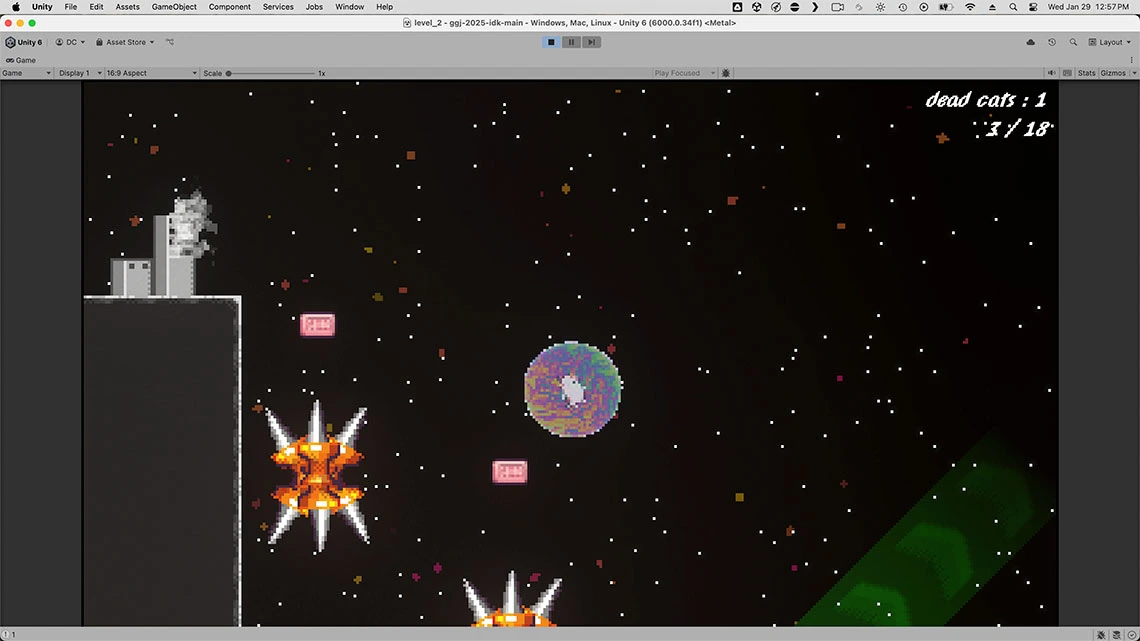
Bubble Trouble, by Rami El-Ali, Ben Seckeler and Fiah Doer.
Building a Game, Building a Community
While the technical experience was invaluable, students also emphasized the connections they formed. “My favorite part of the Game Jam was getting to spend time with Tucson’s game development community,” Seckeler says. “It was lovely to be around so many wonderful people who are so passionate about games.”
The Game Jam’s in-person setting—a rare opportunity after years of online jams—was a highlight for many. “As someone who’s been regularly doing online jams since the start of the pandemic lockdown, the simple aspect of doing one in-person improved an already great experience by a magnitude of at least ten,” Koehler says. “I can’t overstate how much I enjoyed it.”
The event also showcased the strong relationships between U of A’s Game Dev Club and Tucson Game Developers, a group of industry professionals and indie developers. “Connecting the two groups together generates positive energy for the Tucson community and exposes novice students to excellent role models, just as we were exposed when first starting to dream about the possibilities in this medium,” says Castalia.
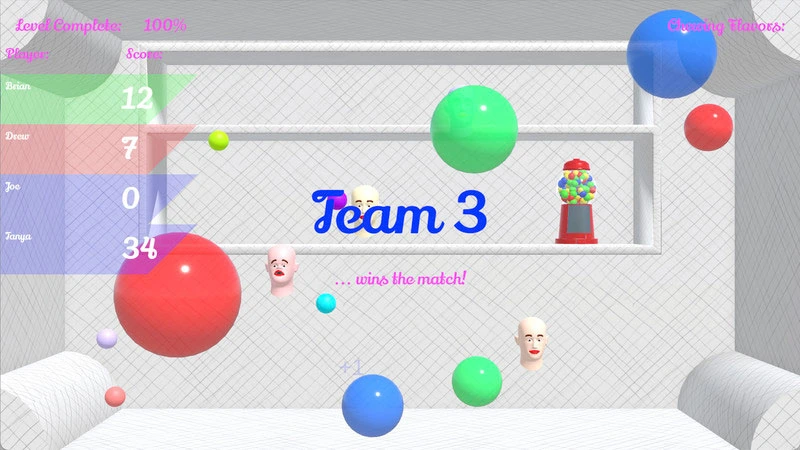
Gumbrawl, by Drew Castalia.
From Inspiration to Innovation
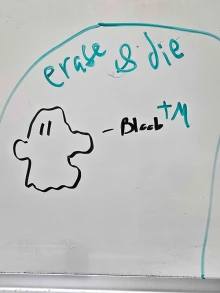
The original Bloob. Photo by Emma Rex.
One of the most memorable moments of the GGJ came when Emma Rex, BSGDD, BSCS ’28, accidentally named the protagonist of her team’s game, The Memories of Bloob. “In one of our first meetings, I had the idea to draw a little blob/ghostlike thing on the board,” she recalls. “I then tried to write ‘blob’ next to it, but I misspelled it with an extra ‘o.’” The happy accident led to Bloob, the game’s main character, and inspired a full-fledged project from her team.
The Game Jam’s time constraints forced students to think creatively, collaborate effectively and adapt quickly—all skills that translate to professional game development. “Game jams prepare me for a career in the tech industry by teaching me multiple valuable skills,” DeVivo says.
El Ali echoed that sentiment. “Game jams help in a lot of ways,” he explained. “They force us to focus on a theme, work in teams to negotiate decisions quickly and use the latest software. For instance, this year we worked with Unity 6, which was only recently released.”
As the weekend wrapped up, participants showcased their finished games, celebrating both their hard work and the shared experience of creating something from nothing in just 48 hours. “It’s always interesting to see what other developers are working on, what software they’re using and how they’re implementing solutions to game design problems," El Ali says. “We hope to see even more participants in upcoming game jams!”
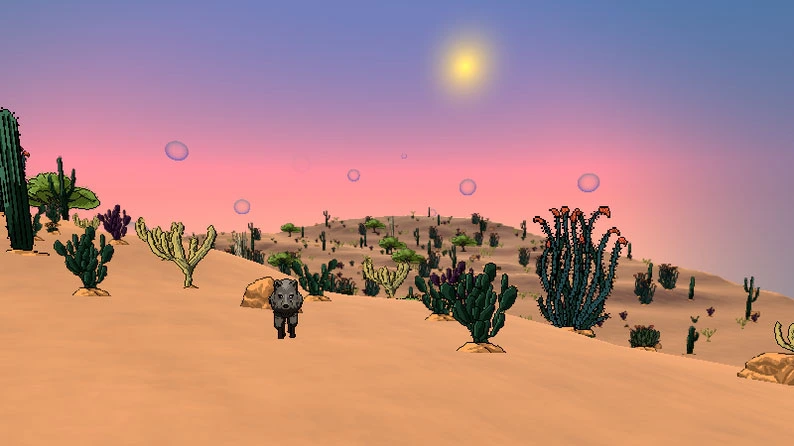
Sonoran Snaps, by Bob Glahn, TJ Palmer, Kristal Gutierrez and others.
A Stepping Stone to the Industry
For students looking to break into game design and development, opportunities like Global Game Jam provide an invaluable launching pad. “I’m grateful that the university was able to host Global Game Jam 2025 this year,” Seckeler says. “Game jams are a great experience for those preparing to launch their career in the tech industry. They present a fantastic opportunity to practice taking something from idea to implementation in a very short amount of time, practice collaboration and communication, and hone technical abilities in a fun, low-stakes environment. And you’ll have something cool to add to your portfolio!”
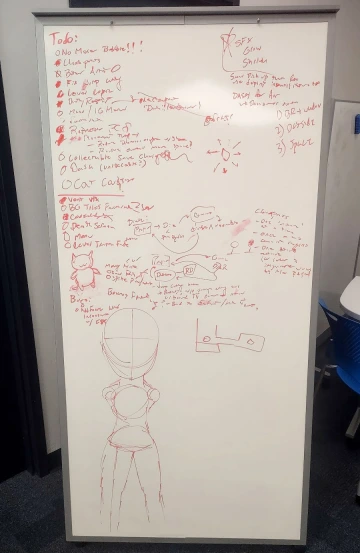
Bubble Trouble's development process. Photo by Ben Seckeler.
From first-time jammers to experienced developers, the event underscored the power of hands-on learning, creative experimentation and community-building.
Tucson and University of Arizona Global Game Jam Projects and Participants
- Bubble Jump – Kyle Engman
- Bubble Trouble – Rami El-Ali, Ben Seckeler, Fiah Doer
- Gumbrawl – Drew Castalia
- The Memories of Bloob – Renée DeVivo, Emma Rex, Kai Koehler, Jack Newman, Kiana Koehler
- Octo and the Bubbles of Sorrow – Jasmine Ding, Robert Hunt and others
- Sonoran Snaps – Bob Glahn, TJ Palmer, Kristal Gutierrez and others
- Toil & Fumble – Atticus Birkett
Explore all of the games submitted by the Tucson - University of Arizona developers.
Learn more about the University of Arizona Game Dev Club, or explore College of Information Science undergraduate majors, including the Bachelor of Science in Game Design and Development.

